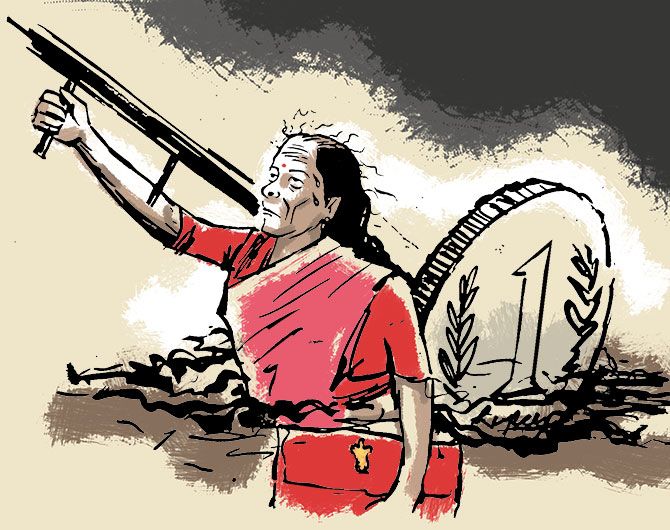A report shows that states would require a compensation to the tune of at least Rs 1.67 trillion in 2024-25, as none of them would be able to achieve a 14 per cent growth every year.
Illustration: Dominic Xavier/Rediff.com

States will need to be compensated for revenue shortfall under the goods and services tax (GST) even after 2022 - the sunset year for compensation - courtesy tepid revenue growth, a report commissioned by the 15th Finance Commission (FC) has noted.
It shows that states would require a compensation to the tune of at least Rs 1.67 trillion in 2024-25, as none of them would be able to achieve a 14 per cent growth every year.
The 15th FC might consider this as an important input while it reforms the formula for devolution of tax revenue from Centre to states.
This finding by the report might put weight on the states’ side in the devolution formula, who are fearing a reduction in its share after the terms of reference of the FC were revised to include special provisions for defence spending.
This fiscal year (2019-20), states are facing an acute revenue crisis due to shortfall in revenue from all sources, including state GST (SGST), sales tax and others.
They allege that due to structural issues in GST, they would be left with no support after the compensation period ends in 2022.
The report, authored by Sachhidananda Mukherjee and R Kavita Rao of National Institute of Public Finance and Policy, a New Delhi-based centrally funded think tank, also highlights inconsistencies in the data provided by various sources on GST revenue.
“Unless the information from different sources (GSTR-1 and GSTR-3B) converges, any projection made from them may be erroneous,” the report notes.
GSTR-1 is the tax return form that includes outward supplies from a company (goods or service) while GSTR-3B is the tax return form that includes the tax paid, input-tax credit utilized, and the summary of purchases and output and turnover of the company for the pertaining period.
The report says that due to different set of compliance requirements for the two return formats, the data presented by firms in these two do not match, and thus make projections difficult.
There is a 20 per cent difference between the compliance of these two reports, and this only adds to the inconsistency, the authors said.
These projections form an extremely important input for the Finance Commission as they base their recommendations on these.
The report also shows that the tax liability does not match with the sum of tax paid in cash and the credit utilised (which should usually be the case) for some quarters, especially the early quarters.
In addition, the declaration of credit utilized in GSTR-3B does not match with actual (in GSTN software) utilisation credit for paying off IGST, CGST and SGST liabilities.
The report uses data from the revenue department in the finance ministry and the data thrown by the GST Network (GSTN), the IT services back-end of the GST tax system.
The two sources of data throw different sets of data, making the analysis of GST unviable.
A swift implementation and better compliance of the new return format would be the only way to tackle this mismatch, and better projections can be made only when the GST system stabilizes after this, the report notes.












 © 2025
© 2025